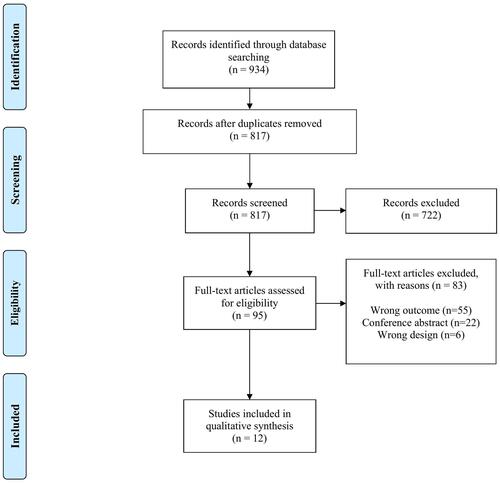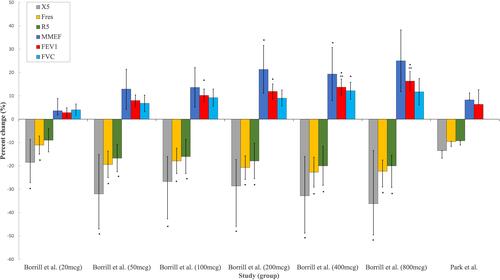Figures & data
Table 1 The PICO (Population, Intervention, Comparator, Outcome) and Study Design for the Systematic Review
Figure 1 PRISMA flow chart showing the studies identification process from EMBASE and Medline databases.

Table 2 Characteristics of Included Studies
Figure 2 The average percentage change and absolute change in MMEF, FEF50, FEV1 and FVC across asthma studies.

Figure 3 The % of change in spirometry indices (MMEF, FEV1, and FVC) and in oscillometry indices (X5, Fres, and R5) in COPD patients.

Figure 4 The percentage change of IOS parameters and FEV1 in Asthmatic patients following BDR.

